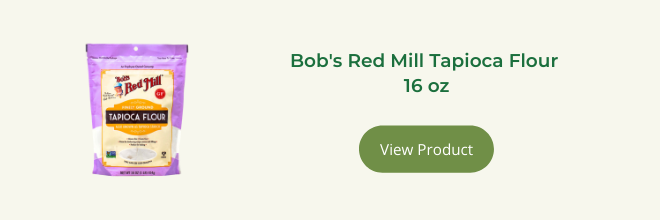
8 Healthy, Delicious All-Purpose Flour Alternatives
If you're looking for a good way to add nutrients to your recipes, alternative flours not only suit people with gluten allergies, but they are also a healthy way to prepare low-calorie, high protein and nutritious foods.
For those who are new to baking with these different flours, keep in mind that you often can’t simply swap them in for all-purpose flour, so it’s a good idea to follow recipes that actually use that particular flour or take a look at our suggestions to swap on or complement all-purpose flour quantities and get great results.
Coconut Flour
This sweet, gluten-free alternative flour offers a rich source of fiber, about 28 g of it in ½ cup. Coconut flour goes divinely in cakes, cookies, or muffins while adding a unique flavor to baked goods than other types of flour.
Substitute: You can swap ¼ to ⅓ cup of coconut flour for 1 cup of regular flour.

Chickpea Flour
Unlike many gluten-free flours, garbanzo or chickpea flour has strong binding properties. Chickpea flour has a mild, nutty flavor with plenty of protein, fiber, and iron which is needed to make hemoglobin, a protein in red blood cells that carries oxygen throughout your body. Because of its slightly beany flavor, it works best in savory baking, such as pizza crusts, and flatbreads.
Substitute: Swap out 25 percent of all-purpose flour for chickpea flour to add flavor, fiber, and protein to your baked goods.

Almond Flour
Nut flours add a great, rich flavor to baked recipes. Almond flour is a tasty, gluten-free alternative to traditional wheat flours. It can be higher in calories but it contains healthy fats and a higher content of protein than regular and alternative flours, which leaves a satisfied feeling. It provides magnesium, a mineral that helps regulate muscle and nerve function, blood sugar levels, and blood pressure.
Substitute: For recipes with yeast like pizza dough or bread, use a ⅓ cup of almond flour per cup of all-purpose flour. For recipes without yeast, like cookies or cakes, sub ¼ of the all-purpose flour in the recipe with almond flour.

Tapioca Flour
Made from the extremely finely ground pulp of the cassava root, tapioca is a gluten-free flour often used, just like cornstarch, to create crispness in gluten-free baked goods and it is a stable thickening agent for gravy and pie filling.
Substitute: You can use it in a 2:1 ratio as a substitute for cornstarch.

Rye Flour
Rye flour is milled from rye kernels, a cereal grain that varies from light to dark depending on how much of the whole grain it contains. Dark rye flour contains more fiber and is heavier in texture than refined light rye flour. Its earthy, slightly sour flavor adds complexity to baked goods, such as crackers and rye bread, and enhances rustic desserts like crumbles.
Substitute: Swap 1 cup all-purpose flour with 1 cup + 2 tablespoons rye flour.

Cassava Flour
Cassava flour is made from ground yuca root and is gaining popularity as a flour substitute for those with gluten allergies or following a Paleo diet. When our Test Kitchen baked with cassava flour, the cooks noticed it tends to absorb liquid more than other flours.
Substitute: If using as an all-purpose flour substitute, start by using a little less than the amount specified and gradually work in the full amount if your batter seems a little too wet.

Quinoa Flour
You can make this higher-protein flour at home by blending raw quinoa seeds. It is ideal to be used in muffins, pancakes, and breads. Quinoa is a gluten-free seed with a nutty, earthy flavor, and is a complete, plant-based protein source, containing all nine essential amino acids your body requires. It is also rich in fiber, magnesium, iron, B vitamins, and antioxidants. It goes especially well with recipes that include chocolate and spices.
Substitute: Swap half the all-purpose flour with quinoa flour to add nutrients and a nutty flavor.
Oat Flour
Made with ground whole oats, this flour is particularly rich in beta-glucan, a fiber linked to heart health benefits and lowering cholesterol properties. Oat flour adds a rich oatmeal flavor and texture that goes perfectly with pancakes, muffins and breads. You can make your own using regular old-fashioned rolled oats in a high-speed blender.
Substitute: Use 25 percent less flour than the recipe specifies, or substitute one-third of the all-purpose flour with oat flour for more flavor.
Bonus Tip: Storing Flour
If you choose to make your own alternative flour, either using a high-speed blender or food processor, consider that grains, seeds or nuts may have higher oil content, and thus, be more prone to spoil easily with temperature fluctuation. Store small batches at room temperature in air-tight jars, but opt to store large amounts in the fridge in a hermetic container to increase shelf-life.
Check out California Ranch Market flours here!


